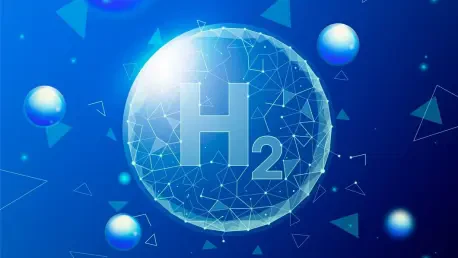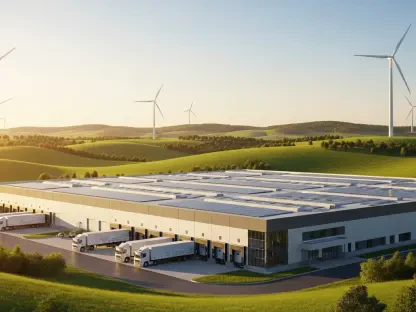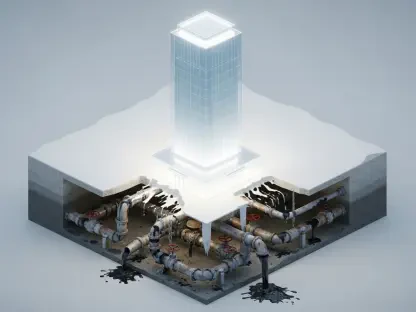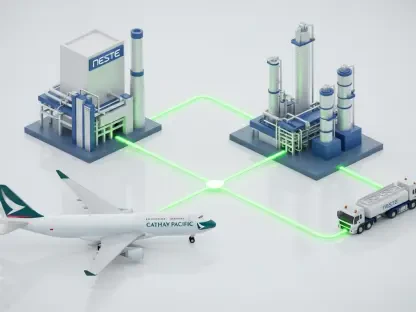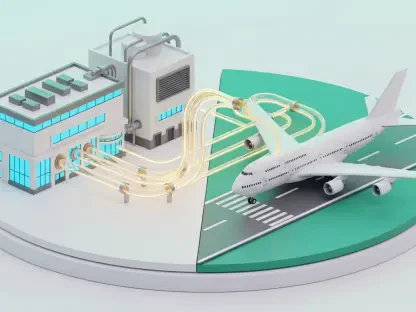Welcome to an exciting conversation with Christopher Hailstone, a renowned expert in renewable energy and energy management. With a deep background in utilities, grid reliability, and sustainable electricity delivery, Christopher brings invaluable insights into the future of clean energy. Today, we dive into the groundbreaking advancements in green hydrogen production, exploring innovative catalysts, the challenges of sustainable energy, and how nature-inspired solutions could transform the industry. Join us as we unpack the science, the hurdles, and the potential of green hydrogen as the fuel of tomorrow.
Can you start by shedding light on what green hydrogen is and why it’s often hailed as the fuel of the future?
Green hydrogen is hydrogen produced using renewable energy sources, like wind or solar, to power the process of splitting water into hydrogen and oxygen. Unlike traditional hydrogen production, which often relies on fossil fuels and releases carbon emissions, green hydrogen is completely clean. It’s seen as the fuel of the future because it can store and deliver energy with zero emissions, making it a game-changer for industries like transportation, manufacturing, and even power generation. Imagine powering heavy-duty trucks or heating steel plants without contributing to climate change—that’s the promise of green hydrogen.
What are some of the major hurdles in producing green hydrogen today, especially when it comes to minimizing carbon emissions?
The biggest challenge is the energy intensity of the production process. Even though green hydrogen aims for zero emissions, the electrolysis process—splitting water—requires a huge amount of electricity. If that electricity isn’t from renewable sources, you’re just shifting emissions upstream. Plus, the current technology and infrastructure for large-scale production are expensive, and scaling up renewable energy to meet the demand isn’t happening fast enough. There’s also the issue of storage and transport—hydrogen is tricky to handle, which adds to the overall cost and complexity.
Could you walk us through the basics of electrocatalytic hydrogen production and how it splits water into hydrogen and oxygen?
Absolutely. Electrocatalytic hydrogen production involves using electricity to drive a chemical reaction that breaks water molecules—H₂O—into hydrogen and oxygen gases. You apply an electric current through water via two electrodes, and at one electrode, water is reduced to form hydrogen gas, while at the other, it’s oxidized to form oxygen gas. A catalyst is key here—it lowers the energy barrier for these reactions, making the process faster and less energy-intensive. Without a good catalyst, you’d need a lot more electricity to achieve the same result.
Why does the choice of catalyst play such a critical role in making this process more efficient?
The catalyst is essentially the heart of the reaction. It determines how much energy you need to put in to split water. A good catalyst reduces the voltage required, which means less electricity and lower costs. It also speeds up the reaction rate, so you can produce hydrogen more quickly. If the catalyst isn’t efficient, you’re wasting energy, and in a world striving for sustainability, every bit of energy efficiency counts. That’s why finding the right material is so crucial.
Platinum is often considered the gold standard for catalysts in hydrogen production. Can you explain why it’s so effective yet so difficult to replace due to its cost and scarcity?
Platinum is incredibly effective because it has just the right chemical properties to facilitate the water-splitting reaction with minimal energy loss. It’s highly stable and can handle the harsh conditions of electrolysis without degrading. However, platinum is rare and extremely expensive, which makes scaling up hydrogen production with it economically unfeasible. Mining it also has environmental impacts. So, while it’s the benchmark, we desperately need alternatives that can match its performance without breaking the bank or harming the planet.
In the search for alternatives, why are metals like nickel, cobalt, and others being explored as potential replacements for platinum?
These metals are far more abundant and cheaper than platinum, which makes them attractive from a cost and scalability perspective. They also have chemical properties that, under the right conditions, can catalyze the water-splitting reaction. Nickel, for instance, has shown a lot of promise because it’s reactive enough to do the job when paired with the right supporting molecules. The goal is to tweak these metals’ environments to boost their efficiency and stability to levels close to platinum, but at a fraction of the cost.
In simple terms, can you explain what a ligand is and how it helps reduce the energy needed for these reactions?
Sure, think of a ligand as a helper molecule that bonds with a metal to form a complex. It’s like a teammate that supports the metal in doing its job. In hydrogen production, the ligand adjusts the metal’s electronic properties, making it easier for the metal to interact with water molecules. This lowers the energy barrier for the reaction, so you don’t need as much electricity to split water into hydrogen and oxygen. Essentially, the ligand makes the metal more efficient at its task.
What is it about the nickel-ligand combination that shows so much potential compared to other metal options?
Nickel, when paired with a well-designed ligand, seems to strike a great balance between reactivity and stability. It can facilitate the water-splitting reaction at a reasonably low energy cost, and the ligand helps prevent it from degrading too quickly under the reaction conditions. Compared to other metals like copper or zinc, nickel has shown results that are closer to some of the best systems we’ve seen, which is exciting. It’s not just about raw performance—it’s also about how accessible and affordable nickel is.
Can you break down the term ‘overpotential’ and why a low value, like cobalt’s 200 millivolts, is encouraging even if it’s higher than platinum’s 30 millivolts?
Overpotential is essentially the extra voltage you need to apply beyond the theoretical minimum to make a reaction happen at a practical speed. A lower overpotential means the process is more energy-efficient. Platinum’s overpotential of 30 millivolts is almost ideal—it’s incredibly efficient. Cobalt’s 200 millivolts is higher, but it’s still encouraging because it’s a significant improvement over using metals alone, which can require up to 1 volt. Plus, cobalt is much cheaper and more abundant than platinum, so closing that gap with further research could make it a viable alternative.
How do ligands specifically improve the efficiency of metal catalysts, and why isn’t the metal as effective on its own?
Ligands fine-tune the metal’s behavior by altering how it interacts with electrons during the reaction. They can either donate or withdraw electrons, depending on what the reaction needs, which helps the metal bind to water molecules more effectively. Without a ligand, the metal has to do all the work on its own, which often requires much higher energy input because its electronic structure isn’t optimized for the task. The ligand acts like a custom tool, making the metal far more capable of handling the reaction efficiently.
Beyond efficiency, how does ligand design impact the stability of the catalyst over time?
Stability is just as important as efficiency because a catalyst needs to last through many cycles of reactions without breaking down. A well-designed ligand can protect the metal from harsh conditions—like acidic or alkaline environments in electrolysis—by stabilizing its structure. If the ligand isn’t designed properly, the metal might corrode, dissolve, or lose its catalytic ability over time. Think of the ligand as a shield; if it’s not the right fit, the metal is exposed and wears out quickly.
What kind of impact do you hope these advancements in catalyst design will have on making green hydrogen more affordable and accessible in the future?
The ultimate goal is to drive down the cost of green hydrogen production so it can compete with fossil fuel-based alternatives. By developing catalysts from abundant, low-cost materials like nickel, we can reduce the reliance on expensive metals like platinum. This could lower the price of hydrogen significantly, making it a practical option for industries and even everyday applications like fueling vehicles. Accessibility also means scaling up production sustainably, so more regions and communities can adopt clean energy solutions without economic barriers.
I’m curious about the biomimetic approach in this field. How does drawing inspiration from nature influence your work on hydrogen production?
Nature is an incredible teacher. A biomimetic approach means looking at how natural systems, like enzymes in plants or bacteria, handle similar reactions with amazing efficiency. For instance, certain enzymes can split water or produce hydrogen using common metals like iron or nickel, not rare ones like platinum. By studying these systems, we try to replicate their mechanisms in the lab—mimicking their structures or electron transfer processes in our catalyst designs. It’s about learning from billions of years of evolution to create sustainable, efficient solutions.
What is your forecast for the future of green hydrogen production, especially with these emerging catalyst technologies?
I’m optimistic. With advancements like nickel-based catalysts and biomimetic designs, I believe we’re on the cusp of making green hydrogen much more viable within the next decade. The focus will likely shift to scaling up these technologies, improving their durability for industrial use, and integrating them with expanding renewable energy grids. If we can keep pushing the efficiency of these catalysts closer to platinum’s level while maintaining low costs, green hydrogen could become a cornerstone of the global energy transition, powering everything from heavy industry to transportation with minimal environmental impact.
